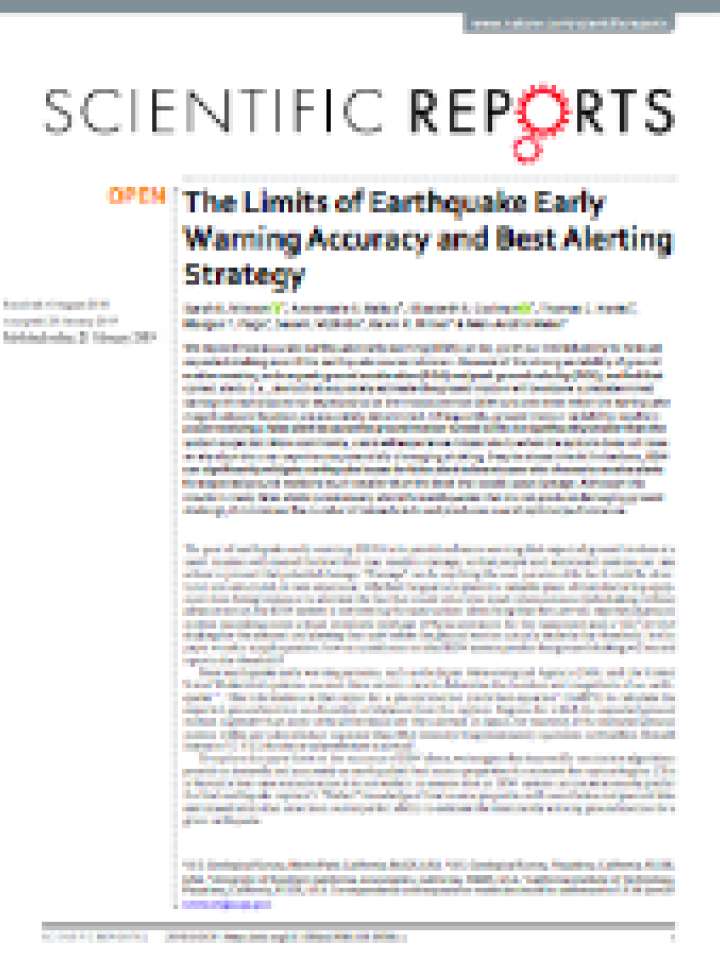The limits of earthquake early warning accuracy and best alerting strategy
This paper explores how accurate earthquake early warning (EEW) can be, given the limited ability to forecast expected shaking even if the earthquake source is known. Because of the strong variability of ground motion metrics, such as peak ground acceleration (PGA) and peak ground velocity (PGV), this paper finds that correct alerts (i.e., alerts that accurately estimate the ground motion will be above a predetermined damage threshold) are not expected to be the most common EEW outcome even when the earthquake magnitude and location are accurately determined. Infrequently, ground motion variability results in a user receiving a false alert because the ground motion turned out to be signifcantly smaller than the system expected. More commonly, users will experience missed alerts when the system does not issue an alert but the user experiences potentially damaging shaking.
Despite these inherit limitations, EEW can signifcantly mitigate earthquake losses for false-alert-tolerant users who choose to receive alerts for expected ground motions much smaller than the level that could cause damage. Although this results in many false alerts (unnecessary alerts for earthquakes that do not produce damaging ground shaking), it minimizes the number of missed alerts and produces overall optimal performance.
Explore further
